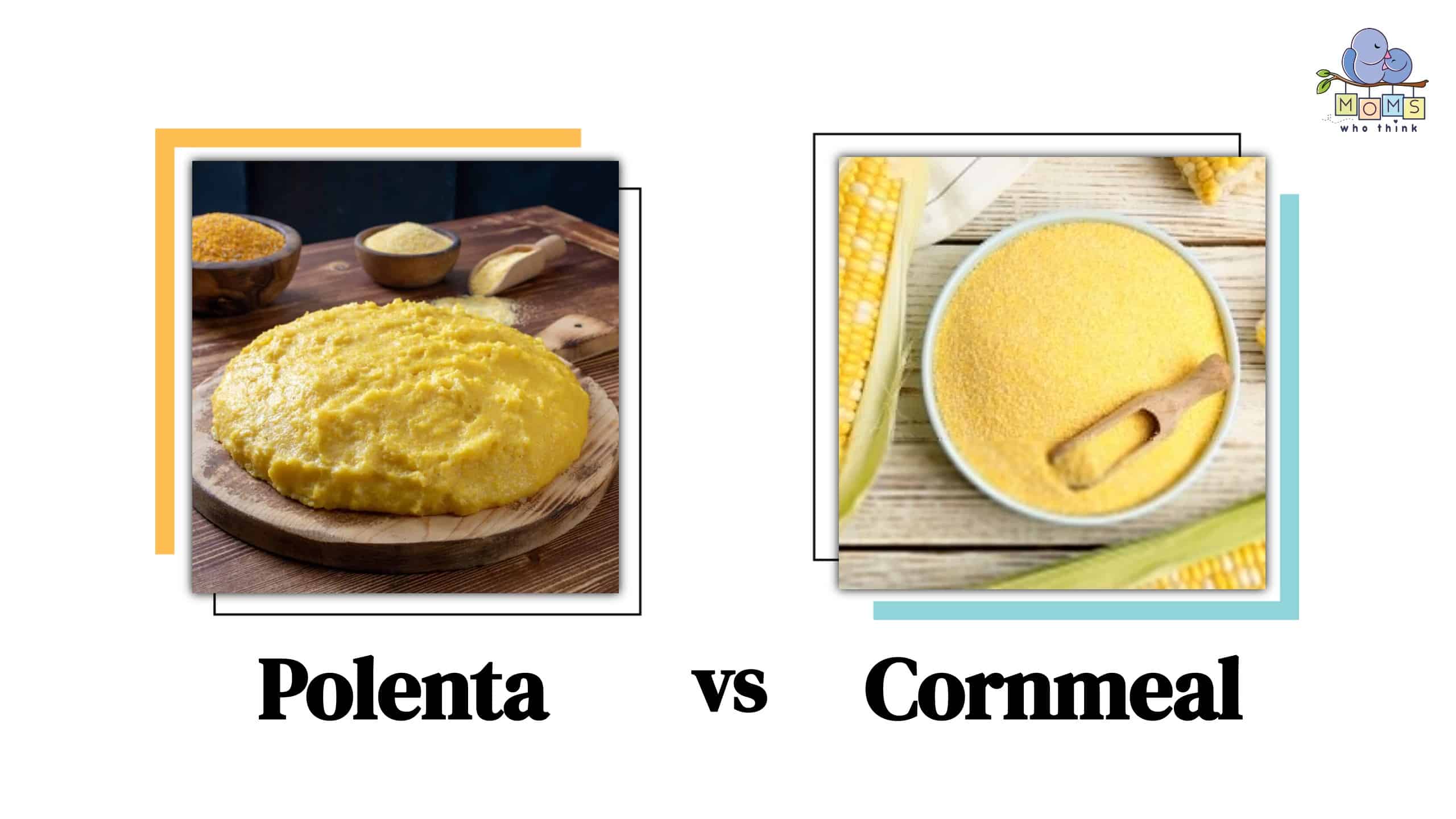Polenta vs. Cornmeal: Battle of the Grains—Discovering the most delicious twist for your palate. Several types of corn products are commonly seen in markets and groceries. It might be hard to tell them apart at certain moments.
Polenta and cornmeal are two distinct kitchen ingredients that frequently get switched due to their similar appearance. Cornmeal is identical to polenta except that it serves a purpose as an ingredient instead of a meal. Both of these come from ground corn products, although do they have obvious differences?
This article will highlight the differences in origin, purposes, process, and texture. Continue reading to learn more about the never-ending battle between polenta vs. cornmeal.
Differences between Polenta and Cornmeal
Polenta and cornmeal are related ingredients that are both made from corn, but there are some differences between them in terms of their purpose, production process, and origin. Here's a breakdown of their distinctions:
Purposes
People frequently use cornmeal to prevent bread and pizza dough from sticking to baking surfaces while adding texture. You can also use it to coat foods like meat and poultry for deep-frying.
Cornmeal is a key ingredient in cornbread, a staple food in the Southern United States. Polenta is a meal, not an ingredient. “The term ‘polenta' pertains to a classic Italian dish involving several coarsely ground grains or starches cooked into a porridge.
Production Process
Several grains make polenta, while corn kernels have always made cornmeal. Cornmeal undergoes crushing dried yellow, white, or blue corn kernels into fine, medium, and coarse textures, whereas polenta is made from a special species of maize known as flint corn. Manufacturers use stone-ground or steel-roller ground corn to manufacture cornmeal, while they typically create classic polenta through stone grinding.
Origin
Polenta emerged in Northern Italy, serving as a staple food among several peasants and laborers. It was a basic yet filling meal. The dish was commonly cooked with more than corn back then, and people would include beans and legumes.
Cornmeal was formerly a Native American delicacy. The Native Americans cultivated this around 5000 BC and it has ever since played an important part in their meal and belief system.
Texture
Polenta and cornmeal have noticeable texture differences. When cooked, polenta has a creamy and smooth texture with a slightly grainy feel. It can be thick and dense, similar to a pudding or porridge. In contrast, cornmeal has a coarser texture, resembling fine sand or small granules. It's often used in recipes to provide a grainy or gritty texture, such as in cornbread or as a coating for fried foods.
Polenta vs. Cornmeal: Nutritional Differences
Polenta and cornmeal come from corn but have some nutritional differences. While grinding dried corn into different textures makes polenta, making cornmeal involves grinding dried whole corn kernels. Both have lots of carbohydrates, but the exact amounts can vary.
Polenta is a good source of energy because it has more carbohydrates. It also has some fiber, which helps with digestion and feeling full. On the other hand, cornmeal might have slightly more fiber because it includes the bran and germ of the corn kernel.
Both polenta and cornmeal have important vitamins and minerals. They're rich in B vitamins like thiamine, niacin, and folate, which are important for energy and nerve function. They also contain small amounts of minerals like iron, magnesium, and phosphorus.
Remember that the nutritional value of polenta and cornmeal can change depending on the type of corn and how you process them. It's best to include different whole grains in a balanced diet to get a wide range of nutrients.
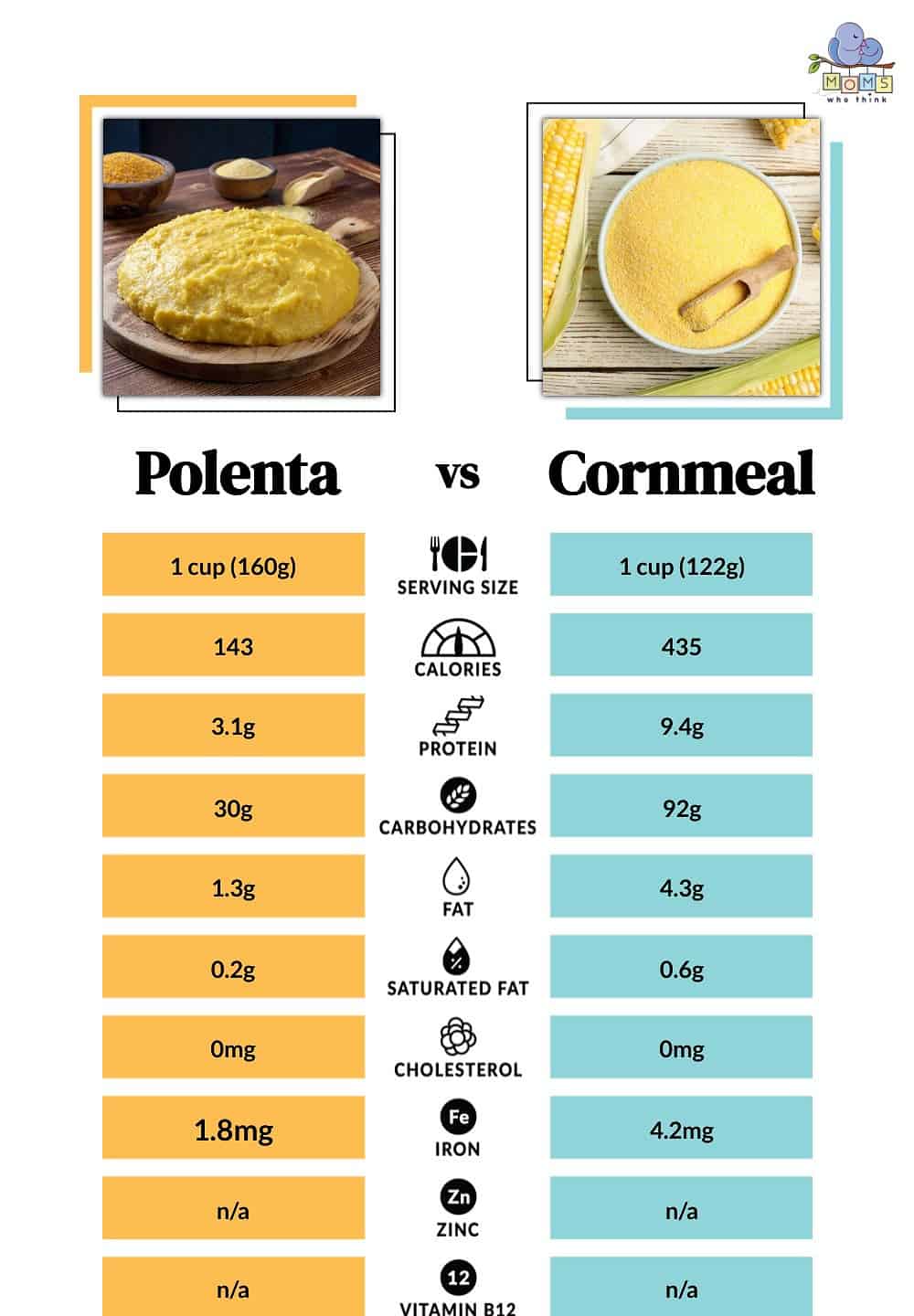
What is Polenta?
Polenta is a northern Italian dish and is not used as an ingredient. People can use polenta, a versatile Italian classic, in sweet and savory recipes. It's now standard on numerous Italian-American dishes and food menus. People cook polenta as a supple, savory porridge and frequently eat it with cheese.
Polenta is supple and smooth, similar to porridge or mush, and creates an excellent sauce base. It is a good alternative if you find a gluten-free cuisine requiring pasta. Polenta becomes firm enough, once it cools down, that it can be sliced, fried, or stacked into layers of pasta.
Forms of Polenta
Polenta, similar to any other grain, is versatile and eaten in several ways. Polenta can come in dry or cooked forms. Dry or uncooked polenta is a great gluten-free substitute for flour in cakes, cookies, and desserts. Polenta cakes are rich and thick, with a delightfully gritty consistency. Cooked polenta is frequently available in tube form, which is then cut and fried, sautéed, or broiled.
The ingredients added and how it's served might transform it into an exquisite feast or a basic meal. Polenta also comes in various grades, varying from coarse to fine textures.
The different kinds need different preparation times. However, you can also purchase part-cooked instant polenta, created using pre-cooked, dried, and finely crushed cornmeal that takes just a few minutes to make. You can also purchase ready-cooked polenta, which comes in a hard block and is great for cutting into chunks and turning them into chips.
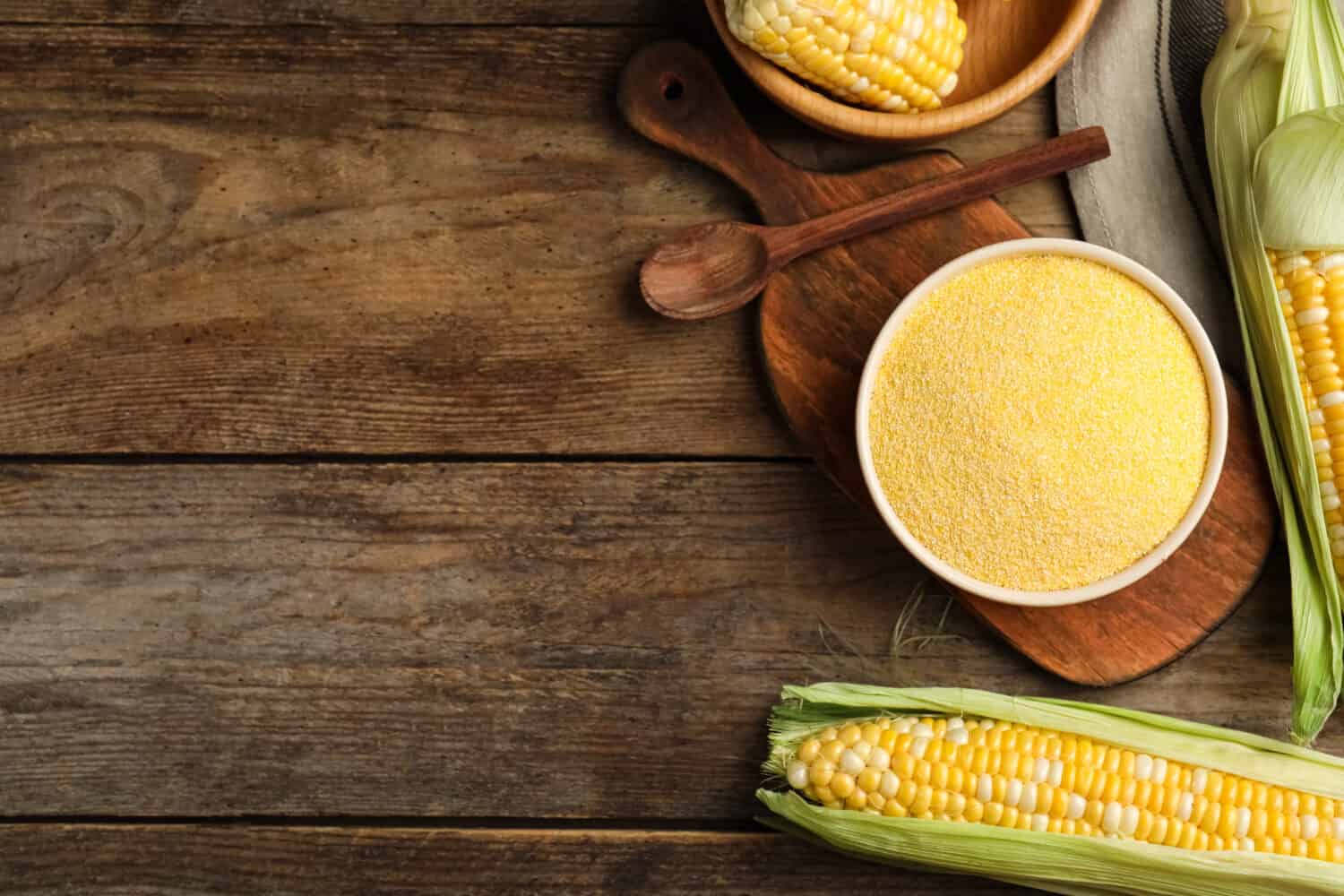
©New Africa/Shutterstock.com
What is Cornmeal?
Cornmeal is produced by grinding dried corn kernels to different textures ranging from fine to coarse.
Cornmeal was originally produced by stone-grinding, which preserves a portion of the kernel's shell and germ. Because of the increased fat content, this process produces a healthier product. However, this shortens the lifespan of cornmeal and makes it prone to easy spoilage. Steel rollers, which eliminate most of the husk and germ, are the more recent method of grinding maize. It cooks to form a light and crispy crust that adds a beautiful texture, bright color, and a sweet taste to various recipes.
Cornmeal is also gluten-free since it is solely prepared from dried corn. However, there is always the possibility that the same factory manufactured the cornmeal alongside gluten goods, so you should constantly review the packaging carefully.
Types of cornmeal
There are various types of cornmeal, each with its own distinct traits, uses, and flavor profiles that contribute to the diverse culinary possibilities it offers.
- Blue cornmeal
Blue corn is a sweet-flavored corn meal made from dried blue corn. Blue cornmeal has higher protein levels than white or yellow cornmeal. It also has a stronger taste than the other two types of cornmeal.
- Yellow cornmeal
Processing and drying whole yellow corn kernels make yellow cornmeal. It additionally features a more robust taste compared to the white one. Because yellow cornmeal is sweeter than white cornmeal, it is perfect for meals requiring sweeter elements. Also, this is usually the type of cornmeal being used for polenta.
- White cornmeal
White cornmeal is made from dried white corn. White cornmeal came from dried white corn. Furthermore, it contains a slightly lower vitamin A level than yellow cornmeal. White cornmeal is popular in the South and can be less sweet than yellow cornmeal.
Can I Substitute Cornmeal for Polenta?
Polenta vs. cornmeal, though both are derived from corn, is not always interchangeable in recipes. Cornmeal has a finer texture than the coarser texture of polenta, affecting the result.
While cornmeal can sometimes serve as a substitute, its use may not yield the same unique creamy consistency that cooking polenta offers. However, if the recipe doesn't heavily rely on the specific texture or consistency of polenta, using cornmeal as a substitute could still have a satisfactory outcome with some adjustments to accommodate the differences between the two.
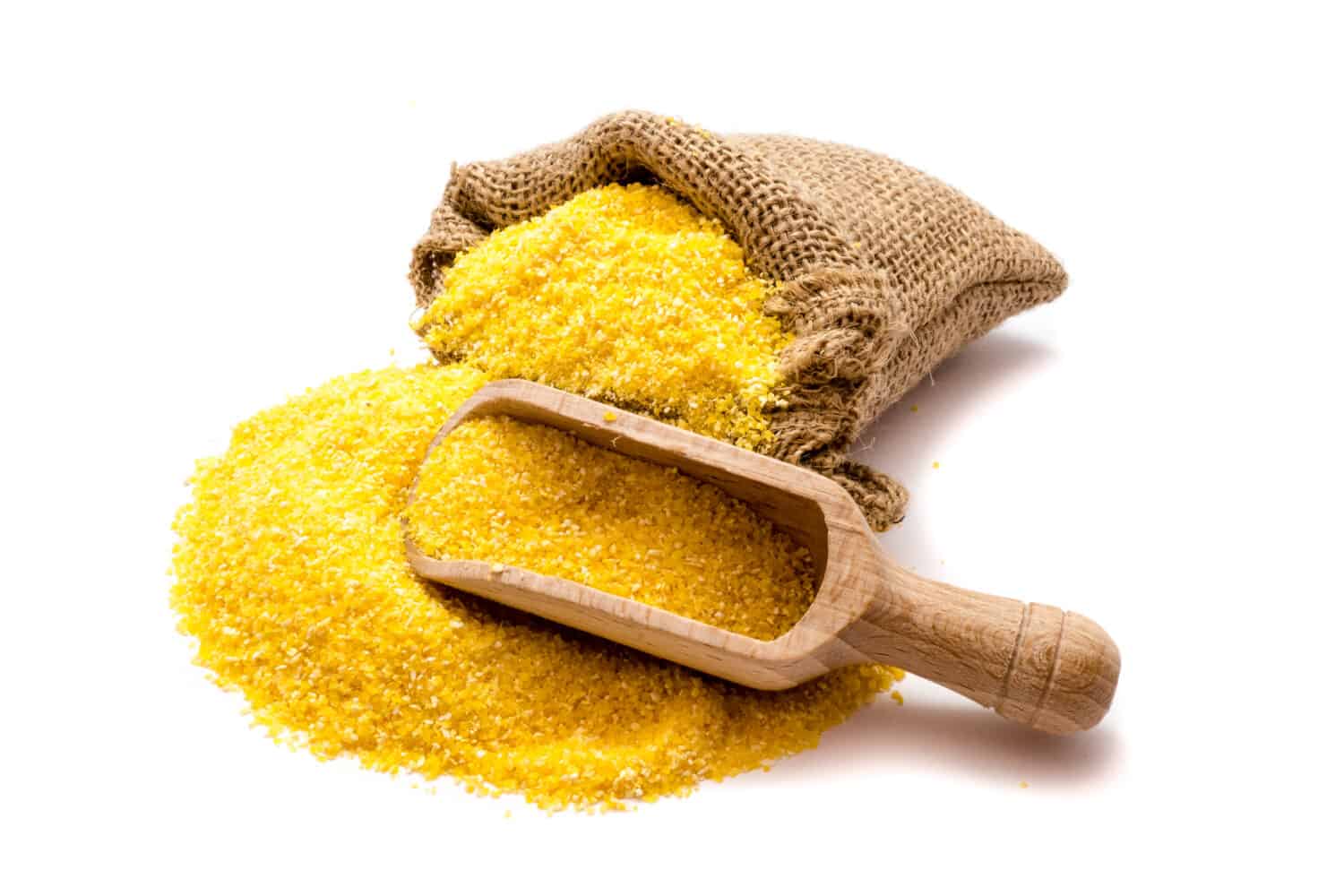
©Oxie99/Shutterstock.com
Polenta Substitutes
While polenta is a popular dish in Northern Italian cuisine, it might not be easily accessible elsewhere. So, here are some healthy polenta substitutes listed below:
Pumpkin Puree
Pumpkin is a low-carb alternative. Pumpkins have fewer carbohydrates than comparable fruits and veggies, making them a great choice for a low-carb diet.
If used as a substitute for polenta, it tastes just like sweet mashed potatoes but is much creamier and smoother in texture.
Cauliflower Puree
Cauliflower is a multipurpose vegetable to create a wide range of recipes.
Blend cauliflower and liquid in a food processor or mixer until very smooth. As a result of its smoothness, it almost tastes like hummus when pureed. This nutritious polenta alternative goes well with flavorful soups and meat.
Quinoa
Polenta and quinoa are gluten-free grains that you can use interchangeably. Quinoa is a wonderful polenta alternative due to its comparable smooth texture and nutty taste. You have to boil it until it is soft before blending it.
Cornmeal Substitutes
Here are a few cornmeal substitutes you can use if you don't have any on hand:
Ground flaxseed
Ground flaxseed is far more beneficial to corn in terms of health benefits. It has a much lower GI, and more importantly, it helps reduce binging. Flax is, unfortunately, a bit bitter due to the defensive properties of plant seeds. However, you can easily adjust the taste by adding sugar or sweetener.
Corn Flakes
Cornflakes are a type of breakfast cereal you can make by toasting cornflakes. The major component is corn, but the malt extract, sugar, and salt it contains adds extra flavor while not being too sweet. To use them as a cornmeal alternative, simply crush them in a food processor or mixer, and you're good to go.
Semolina
Semolina is a coarse flour that resembles cornmeal in appearance and texture. Its crunchy texture works well as a substitute for cornmeal in several recipes. Some people use this to make pastries and as a coating for meat, fish, and poultry like cornmeal. Semolina also provides a nice texture to the bread, pizza dough, and biscuits.
Final Thoughts
In the end, since polenta vs. cornmeal are both made from dried whole kernels, they can be easily substituted for one another. Most of the time, it comes down to taste and preferred texture.
Polenta is a traditional Italian meal. In the past, people produced it from any grain except yellow corn kernels (cornmeal). Cornmeal, on the contrary, is an ingredient you can use for polenta and various baked goods. People typically use this as both an ingredient and a binding agent.
Since both come from corn, they are popular gluten-free items that include various nutritional elements and aid in regulating fat blood levels. As a result, it aids in the prevention of cardiovascular illnesses.
Remember, you may use medium or coarse-ground cornmeal in making polenta. However, look for cornmeal branded “polenta” since this makes it more authentic while providing a bowl of porridge with a deep yellow-orange color and a distinct, addicting flavor.
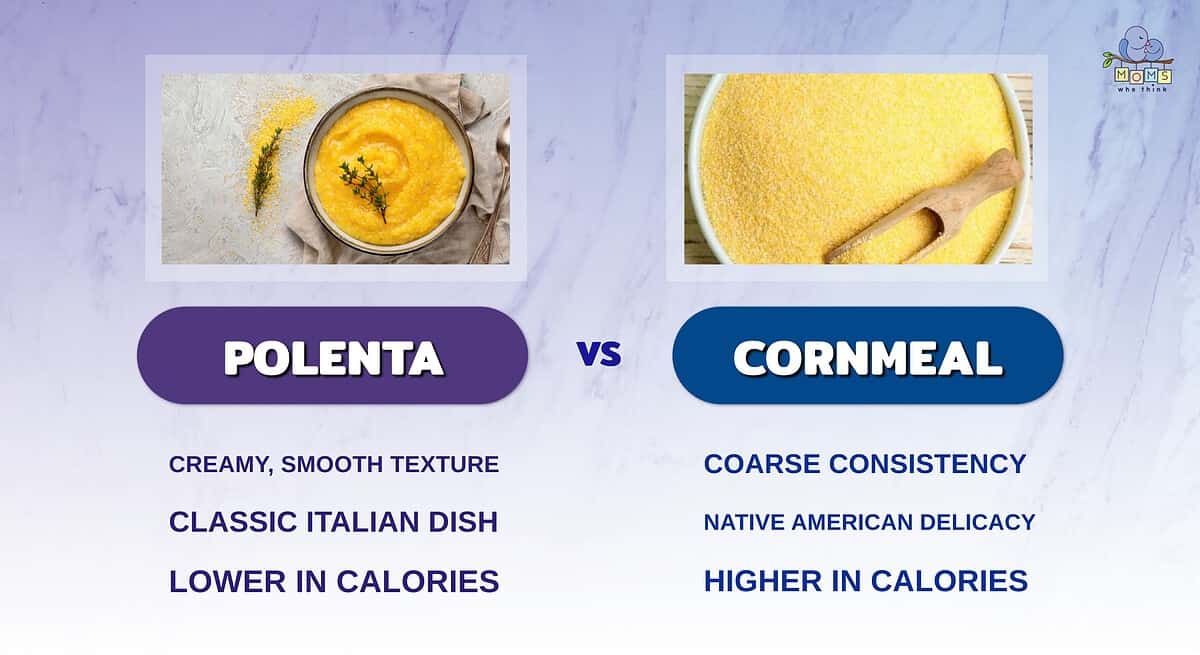
Polenta and cornmeal may look the same, and both are derived from corn, but they are completely different. Here's a recap of what those are:
- Cornmeal is more of an ingredient in cooking. On the other hand, polenta is more of a dish.
- While cornmeal is made of corn kernels, polenta is made of corn and other ingredients.
- When cooked, polenta has a creamy yet smooth texture, while cornmeal has more of a coarse texture.
Looking for another recipe that uses cornmeal? Check this one out:
PrintCrock Pot Chicken with Cornmeal Dumplings
Ingredients
1 (9 oz.) pkg. frozen cut green beans
2 cups cubed, cooked chicken
2 cups diced potatoes
1 (13 3/4 oz.) can chicken broth
1 (12 oz.) can vegetable juice cocktail (1 1/2 cups)
1/2 cup sliced celery
1/2 cup chopped onion
1 teaspoon chili powder
1/2 teaspoon salt
6 drops bottled hot pepper sauce
1 1/4 cups packaged biscuit mix (like Bisquick)
1/3 cup yellow cornmeal
1 cup sharp shredded cheddar cheese
2 Tablespoons fresh parsley
2/3 cup milk
Instructions
1. Thaw beans by placing in strainer and run hot water over beans. Transfer to crock pot.
2. Add chicken, potatoes, chicken broth, vegetable juice, celery, onion, chili powder, salt and hot pepper sauce, mixed together. Cover.
3. Cook on low for 4 hours. Turn to high heat and heat until bubbly. Add water at this point if needed.
4. Combine biscuit mix, cornmeal, 1/2 cup of the cheese and parsley. Add milk and stir until just moistened.
5. Drop by tablespoons onto stew; cover. Cook 2 1/2 hours more (don't lift cover). Sprinkle dumplings with rest of cheese.
